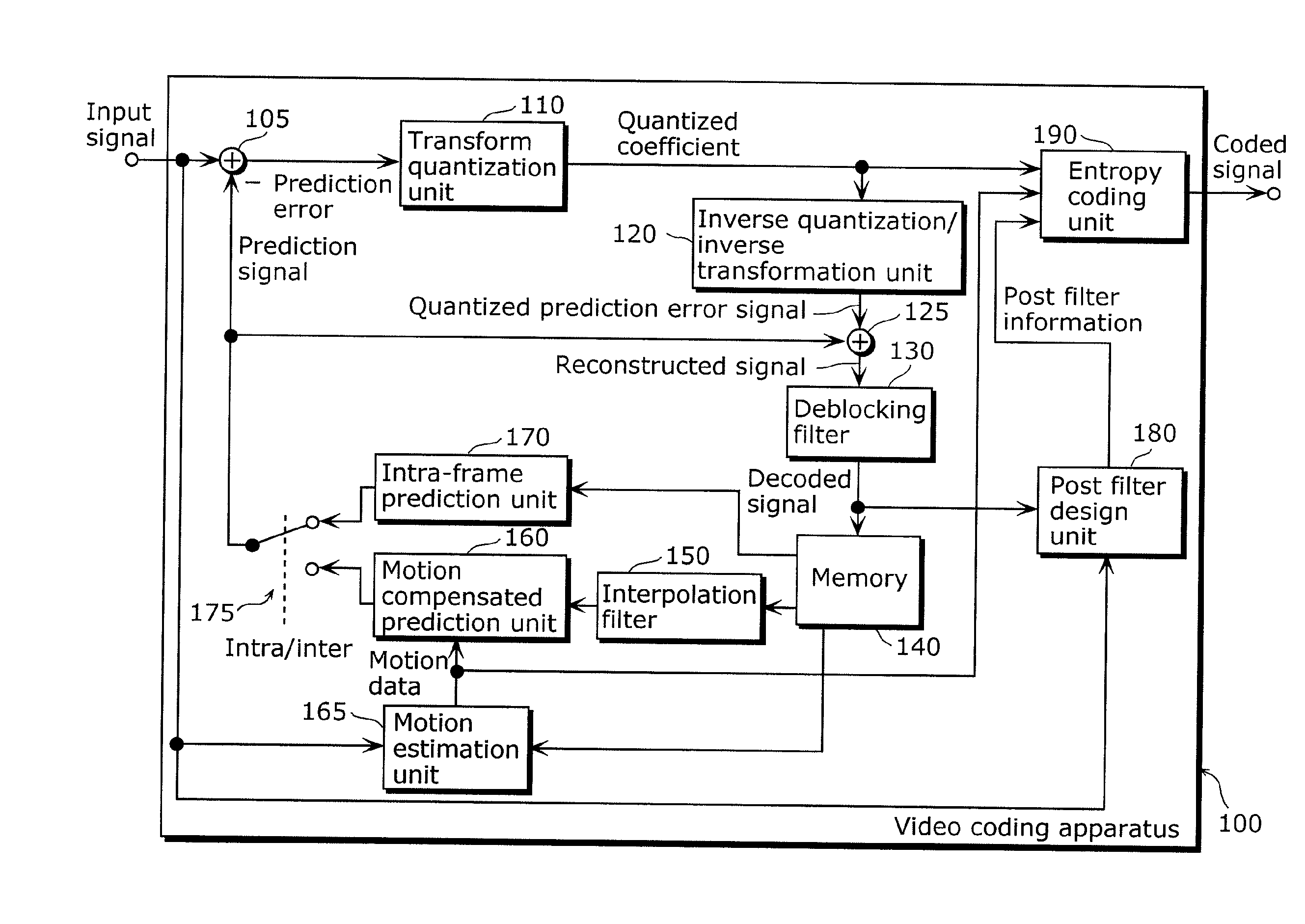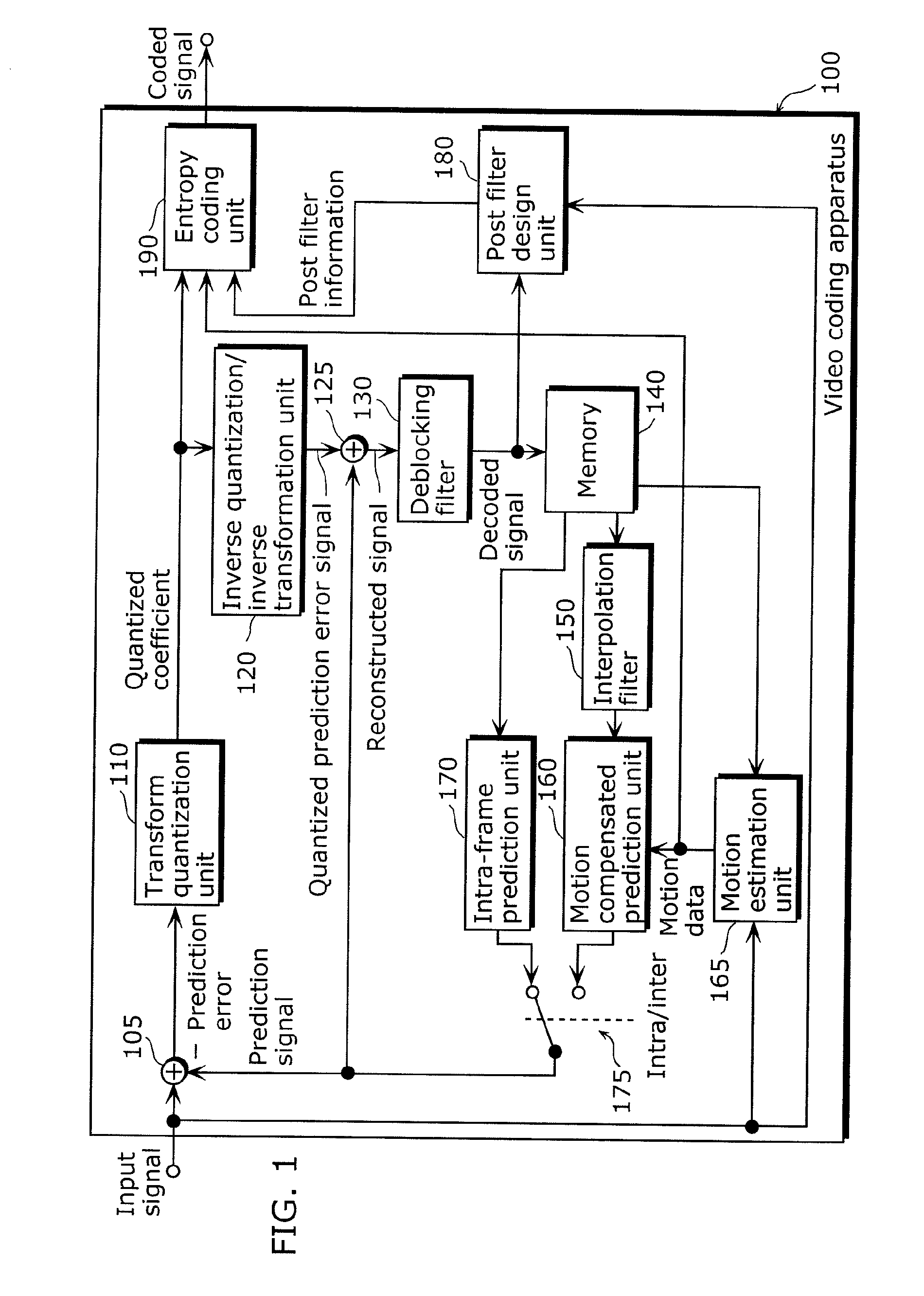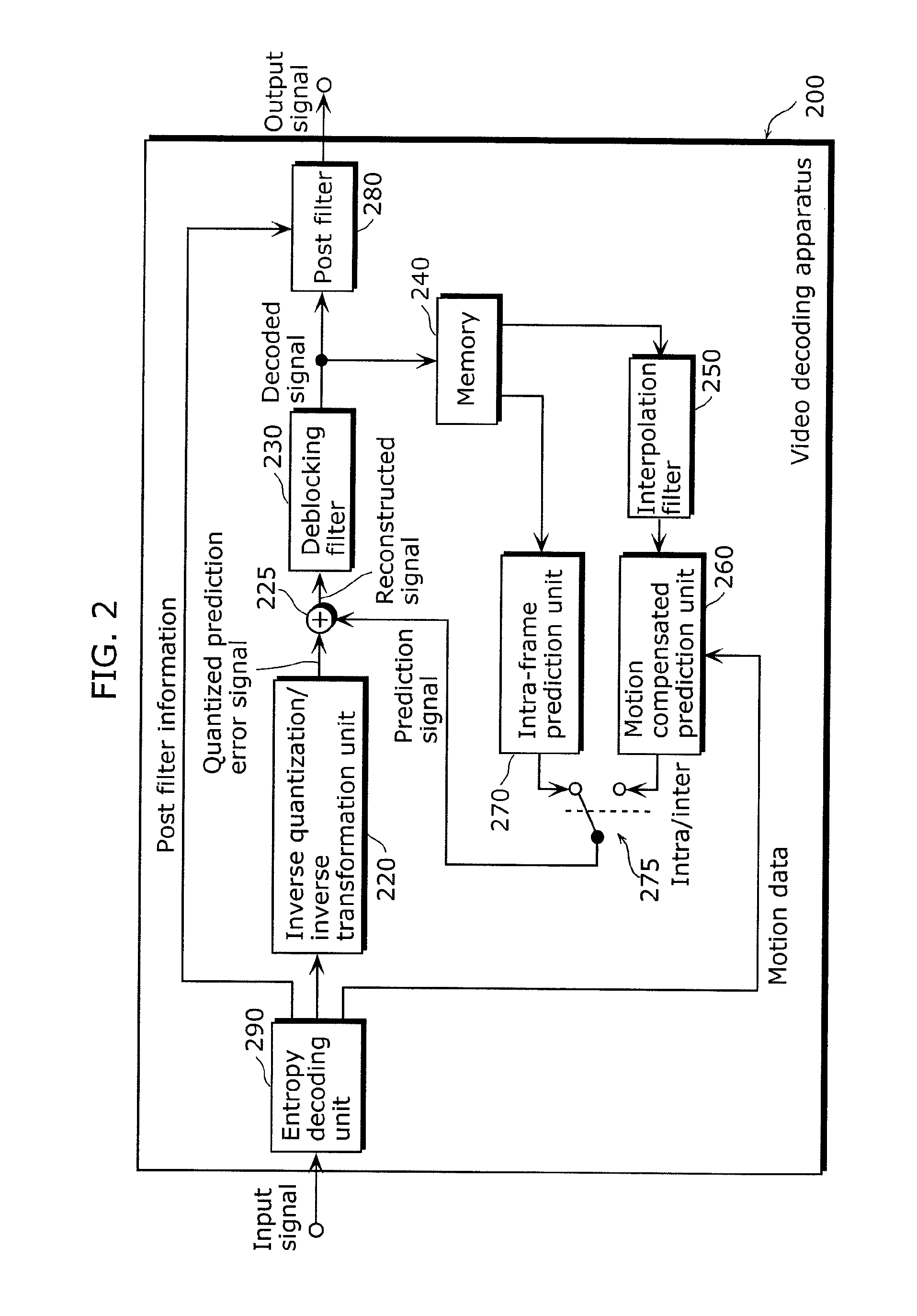Image coding method, image decoding method, image coding apparatus, image decoding apparatus, system, program, and integrated circuit
a coding method and image technology, applied in the field of image coding method, image coding method image coding apparatus, etc., can solve the problem that blocking artifacts has a negative effect on human visual perception, and achieve the effect of improving coding efficiency
- Summary
- Abstract
- Description
- Claims
- Application Information
AI Technical Summary
Benefits of technology
Problems solved by technology
Method used
Image
Examples
embodiment 1
[0104]FIG. 5A schematically illustrates a video coding apparatus 500 according to Embodiment 1 of the present invention. Furthermore, FIG. 5B shows a flowchart of operations of the video coding apparatus 500. Although the following description shows an example of a video signal to be processed, other signals (for example, still images) may be provided, not limited to the video signal. As illustrated in FIG. 5A, the video coding apparatus 500 includes a coding unit 510, a decoding unit 520, a filter design unit 530, and a filter 540.
[0105]The coding unit 510 codes an input signal (also referred to as “a signal to be coded” and follows the same hereinafter). The input signals typically are signals composing a picture (frame). Here, “to be coded” means, for example, processing for quantizing the input signals. More specifically, the processing indicates generating a prediction error signal by subtracting a prediction signal from the input signals, DCT transforming the prediction error ...
embodiment 2
[0211]FIG. 10 illustrates a video coding apparatus 600 modified based on the H.264 / AVC video coding standard, according to Embodiment 2 in the present invention.
[0212]As illustrated in FIG. 10, the video coding apparatus 600 includes a subtractor 105, a transform quantization unit 110, an inverse quantization / inverse transformation unit 120, an adder 125, a deblocking filter 130, an entropy coding unit 190, and a predicted block generation unit (not illustrated). The video coding apparatus 600 subdivides a signal to be coded into blocks, and sequentially codes the blocks. The signal to be coded represents an image.
[0213]The subtractor 105 subtracts a predicted block (prediction signal) from a block to be coded (input signal) to generate a prediction error signal. The transform quantization unit 110 performs Discrete Cosine Transformation (DCT) on the prediction error signal, quantizes the DCT-transformed prediction error signal, and generates quantized coefficients. The entropy codi...
embodiment 3
[0232]According to further Embodiment 3 in the present invention, a video coding apparatus 800 and a video decoding apparatus 900 each with an interpolation filter are provided. FIG. 12 illustrates the video coding apparatus 800 including an interpolation filter and design unit 850. The description of the commonalities with each of Embodiments will be omitted, and the differences will be mainly described hereinafter.
[0233]The interpolation filter and design unit 850 operates and includes the same configuration, as the filter design unit 530 described with reference to FIG. 5A. Furthermore, the interpolation filter and design unit 850 operates and includes the same configuration, as the interpolation filter 150 described with reference to FIG. 10. In other words, the interpolation filter and design unit 850 performs interpolation filtering on a decoded signal, and calculates a filter coefficient used by itself.
[0234]The locally determined correlation data determined by the interpolat...
PUM
 Login to View More
Login to View More Abstract
Description
Claims
Application Information
 Login to View More
Login to View More - R&D
- Intellectual Property
- Life Sciences
- Materials
- Tech Scout
- Unparalleled Data Quality
- Higher Quality Content
- 60% Fewer Hallucinations
Browse by: Latest US Patents, China's latest patents, Technical Efficacy Thesaurus, Application Domain, Technology Topic, Popular Technical Reports.
© 2025 PatSnap. All rights reserved.Legal|Privacy policy|Modern Slavery Act Transparency Statement|Sitemap|About US| Contact US: help@patsnap.com



